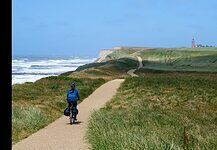Travel to the Philippines
The Philippines is a Southeast Asian archipelago of over seven thousand islands, flung between the South China Sea and the Philippine Sea.
The Philippines lays claim to being Asia’s largest Catholic country, a result of Spanish colonialism. The country is a melting pot of over a 100 different ethnic groups, with a heady European influence.
Geographically, the seven thousand islands are divided into larger island groups – the Luzon, Visayas and Mindanao. The Philippines has some of the loveliest beaches with the world’s longest coastline.
The Filipino people are a blend of the East and the West, when it comes to their culture. Filipinos believe in extending hospitality in their homes. Guests are treated like royalty and household feasts are not uncommon.
The Philippines is home to the spectacular sun-drenched beaches of Boracay, lip-smacking cuisine, many UNESCO World Heritage sites like the rice terraces of Banaue, colonial architecture evident in the churches, shopping malls galore and a happening nightlife scene. Moreover, English is the second-language of many Filipinos. It is therefore, easy for foreign travelers to navigate themselves around the country.
All these reasons and more, make the Philippines a desirable tourist destination in Southeast Asia. We hope you find our travel guide to Philippines useful for planning a trip to the country.
Visa Requirements for the Philippines
Citizens of the ASEAN countries do not require a Philippines tourist visa for an entry period of 30 days.
It is also possible to obtain a visa upon arrival for 59 days. Nationals of several other countries are permitted visa free entry to the Philippines although the terms and conditions vary. Visa extensions are permitted through the Bureau of Immigration.
Please check the current guidelines, of the visa requirements for your country and ways to get a Philippines visa online, before you travel to the Philippines.
Important Cultural Information
The Philippine people are an affable, friendly group of people. They appreciate courtesy and it certainly goes a long way with them. Take the time to say ‘salamat’ meaning ‘thank you’ and you will receive better responses. The Filipino people revere their elders. Older people can be addressed by Tito (Uncle), Tita (Aunt), Manong (Mr) or Manang (Mrs/Ms). Ate is used to mean older sister, Kuya – older brother.
Remember to remove footwear before entering a Filipino house.
Address a person you are meeting for the first time with their title and their first and last name.
The best time to visit Philippines is during the dry season- between November and April. Consider investing in good travel insurance for Philippines.
Banking & Money in the Philippines
The currency in the Philippines is the Philippines peso (PHP). One peso is equal to 100 centavos. Peso bills come in denominations of 20, 50, 100, 200, 500 and 1000. Coins exist in 5,10, 25 centavos and also 1, 5 and 10 pesos.
Pre-2010 peso bills are now worthless. The newer notes look like the old ones with some colours and people on the front. The difference is that the new notes feature Filipino natural wonders as opposed to historical sites on the old ones.
You can exchange currency at banks. Money changers exist in hotels, supermarkets and shops.
There are many ATMs scattered nationwide. PLUS and Cirrus networks are accessible at many ATMs. MasterCard ATMs are to be found at BPI (Bank of the Philippine Islands) branches. Some retail outlets will accept credit and debit cards (VISA, MasterCard, American Express and JCB), provided you hit the minimum purchase amount requirement.
The names of some banks to be found in the Philippines include: Bank of the Philippine Islands (BPI), Al-Amanah Islamic Investment Bank of the Philippines, Asia United Bank Corporation (AUB) and BDO Unibank,Inc.,. Some foreign banks include Deutsche Bank, Standard Chartered Bank, Bank of America, Citibank and more.
Medical Emergency Information
A few emergency numbers for the Philippines include:
Police: 117
Medical: 112
Fire: 911
Immigration hotline: 527
Healthcare is provided though both government and privatized hospitals. Expats must purchase private health insurance policies.
Names of some hospitals in Manila are the Metropolitan Medical Center, Philippine General Hospital, Makati Medical Center and Chinese General Hospital and Medical Center.
If you’re looking for travel insurance, we are an affiliate of World Nomads.
Wi-Fi and Internet in the Philippines
There are 3 major cell phone operators: Globe, Smart and Sun Cellular. Mobile networks use the GSM 900 and 1800 systems. A prepaid SIM card from one of these operators is easy to acquire and quite inexpensive. 3G technology is widely available but poorly implemented outside urban areas. Reloading prepaid SIMs is also quite easy.
Internet access areas can be found at the major malls. Neighbourhood internet cafes are much cheaper compared to internet services in malls and hotels.
There are some free Wi-Fi hotspots but they are far and few. Checkout Starbucks and Seattle’s Best outlets. The SM chain of malls offer free Wi-Fi. Make sure to always use a VPN service (like ExpressVPN) when using free public Wi-Fi.
Arrival in the Philippines
Given that the Philippines consists of numerous islands- the best way to arrive in the country, is to fly into one of the many international airports. The Philippines has international airports at Mactan-Cebu (CEB), Laoag (LAO), Iloilo (ILO), Manila (MNL), Kalibo (KLO) and Clark Freeport Zone (CRK). Two of the best airports to fly into are Mactan-Cebu and Kalibo International Airport, given that they are outside the typhoon zone and are relatively centrally located within the archipelago.
Delta Airlines and Philippine Airlines flies into Manila from North America. Philippine Airlines has direct flights from various cities in Australia and New Zealand into Manila. Air China and China Southern Airlines fly between Beijing and Manila. Philippine Airlines has a vast network between locations in Europe, Southeast Asia, the Middle East and Manila.
Search for available flights to the Philippines on Expedia.
It is possible to arrive in the Philippines from Malaysia by ferry. Aleson Shipping lines plies between Sandakan in Malaysia and Zamboanga City in the Philippines.
Use the below search box to search for all types of transport for traveling to the Philippines.
Areas of the Philippines
Administratively, the Philippines is split up into 17 regions that can be geographically grouped into three island groups – Luzon, Visayas and Mindanao.
Luzon
This is the northernmost of the island groups and is home to the capital city of Manila. This is the centre of history, commerce and government. It consists of the administrative regions of Metro Manila, Ilocos Region, Central Luzon, Mimaropa, Cordillera Administrative Region, Cagayan Valley, Calabarzon and Bicol.
Visayas
This is the central group of islands. The administrative regions of this area are the Western, Central and Eastern Visayas.
Mindanao
This is the southernmost of the island groups. Zamboanga Peninsula, Davao Region, Northern Mindanao, Soccsksargen, Caraga Region and Autonomous Region in Muslim Mindanao are the administrative regions of Mindanao.
Major Cities
The major cities of the Philippines consist of the capital city of Manila. Baguio is the summer capital. Cebu is a major industrial centre. Iloilo City is a major tourist centre and the gateway to the beach paradise of Boracay.
Transportation in the Philippines
There are many ways to avail of transport in Philippines.
The best way to travel within the Filipino archipelago is by air. Philippine Airlines (PAL) and Cebu Pacific have domestic flights between Manila and Cebu. Air Asia serves other smaller destinations. Most of the domestic carriers are economy only. PAL does offer business travel in the domestic sector.
Philippine National Railways (PNR) run two major lines of intercity service that include the Bicol Express and the Mayon Limited. The Bicol Express runs between Manila and Naga. The Mayon Limited between Manila and Ligao. Train travel speed is comparable to that of bus travel but is more comfortable.
Within the islands, bus travel is the cheapest way to go. Major bus companies are ALPS The Bus,Inc., Victory Liner and Philtranco. The largest road network converges at Manila. The Pan-Philippine Highway (AH26) begins in Laoag and ends in Zamboanga City, by passing Luzon, Samar, Leyte and Mindanao. You can rent a car in Philippines. Car rentals permit self-driving along with hiring a driver.
Within Manila, the Pasig Ferry Service water buses are convenient for traveling to and from stations centred on the Pasig river. Inter island ferry service is slow but in some instances cheap. 2GO Ferry plies between various Filipino ports. Ocean jet provides fast ferries in the Visayas.
Jeepneys – shared Jeep rides – are the most popular form of transport in urban areas. Rickshaws are a much used form of transport too.
Accommodation in the Philippines
Tourists looking for accommodation in the Philippines can choose from hotels, motels, bed-and-breakfasts, inns and pension houses. For long term stay- furnished condominiums and apartments are available.
The names of a few hostels in Manila include the Pink Manila, Manila-Z-Hostel and Lub d Philippines Makati. The Yellow Doors Hostel in Tacloban, Circle Hostel in Baler and the Paglaom Hostel in General Luna are also notable.
The Philippines has some beautiful beach destinations and the beach resorts make a wonderful, relaxing place to stay. There are some exceptional ones to be found in Boracay, Mactan and Bohol, to just name a few.
If you are looking to stay at one of the more luxurious hotels in Manila consider booking you stay at the Raffles Makati, The Peninsula Manila, the Makati Shangri-La and the iconic Manila Hotel – where the likes of Michael Jackson, John Wayne and the Beatles have stayed.
Food & Dining Guide for the Philippines
Filipino cuisine is a mix of many palates: Indian, Chinese, Malay, European, American and Spanish. Filipino cuisine depends less on spices but is by no means bland. Garlic, onions and ginger lend flavour to the dishes and food is slow cooked to maximize the flavour. Rice is the staple food.
Some specialty Filipino dishes to try include :
- Sinagag (rice cooked with garlic and vegetables, often with dried shrimp, dried fish or hotdogs)
- Puto (soft white rice cakes)
- Bibingka (rice cake with cheese and salted egg)
- Pancit (noodles served in many ways)
- Adobo (chicken or pork served in a garlic stew, with vinegar and soy sauce)
- Arroz Caldo (rice porridge with egg, chicken liver)
- Lumpia (spring rolls)
Philippine’s Attractions
The Philippines lays claim to a number of UNESCO World Heritage sites. Banaue is a town to the north of Luzon, in the Cordillera mountains, famous for its rice terraces. Sometimes referred to as the ‘eighth wonder of the world’ , these 2000 year old rice terraces were created by the ancient local people, the Ifugao, in a vast engineering feat. It is one of the most beautiful places in the Philippines.
Interested to see a complete European colonial town in Asia? Head to Vigan, in northern Luzon with its incomparable old-world charm – an unmissable Philippines tourist attraction.
The Philippines is famous for its Baroque architecture, especially the churches. The Inmaculada Concepcion (Manila), Nuestra Senora (Ilocos Sur), Santo Tomas (Iloilo) and San Agustin in Ilocos Norte are notable examples.
To learn about the history of the Philippines visit Rizal Park, Blood Compact site and Intramuros. Intramuros is the oldest part of Manila and is also known as the ‘Walled City’- a three mile enclave of massive stone walls that helped in fortification. Within the protection of the walls, a beautiful Spanish city grew up. This is one of the top places to visit in Manila.
The beaches and blue waters of Boracay, El Nido, Puerto Galera and Pagudpud beckon to beach lovers. They are some of the best beaches in Philippines. The Tubbataha Reefs National Park harbours a wonderful array of coral reefs and one of the best places to visit in Philippines for nature lovers.
Flora and fauna abound in the rural areas of the Philippines. Look out for the Tarsier, Carabaos and Tamaraws, water buffaloes, the Philippine Monkey Eating Eagle and endemic plant species like the Waling-Waling orchid.
If you are a shopper, you won’t be disappointed with the range of shopping opportunities that the Philippines has on offer. You will literally shop till you drop at these most commercial tourist spots in the Philippines.
Shopping in the Philippines
Shopping is a popular pastime for many Filipinos. Their economy is majorly driven by shopping and consumerism. Shopping sales occur around payday and last for three days. Three of the world’s largest shopping malls are found in the Philippines.
Some of the best items to take home from the Philippines as souvenirs include antique porcelain plates, antique saint statues, bargain clothes, brass decorative items, embroidered dress, silver jewelry and pearls, mats, shells, wood carvings and much more.
Places where you can bargain include flea markets like Divisoria and shopping centers like Market!Market! and Greenhills in Metro Manila.
The names of some major malls to check out in Manila include SM Mall of Asia, Robinsons Place Mall, SM City Manila and SM Mega Mall.
Make sure to visit the Legazpi Sunday Market in Metro Manila for a variety of food stalls and cool bargains.
Nightlife
The Philippines has a vibrant nightlife scene, from the many karaoke bars across the country, to the beach bars of Boracay and the all nighter bars and clubs in Manila and Cebu.
Manila, named the ‘Queen city of the Pacific’ has a reputation for putting on a show, well into the night. There are a number of popular nighttime hotspots around the city including underground nightclubs (Black Market) and live music joints like Strumm’s, Tago, Craft, Handlebar and 12 Monkeys.
Beautiful Boracay Island with its beach bars is an epic place to spend time dancing and drinking. Cocomangas, one of the first party venues to open on the island, serves up thirst quenching cocktail jars.
Head to Cebu City for the best nightlife in Cebu. Metro Cebu has everything from Irish pubs, karaoke lounges, live music bars and clubs.
Safety Tips for the Philippines
Regarding crime, be wary of pickpockets particularly in crowded areas. Avoid flashing smartphones and large amounts of cash in the street, as they may attract attention. Keep away from secluded alleys especially at night.
Drive by shooting is common in Muslim Mindanao as well as kidnappings. Penalties for possession of drugs is very harsh. The Philippines is a predominantly Roman Catholic country but is also home to a large LGBT community.
Malaria is prevalent in parts of the Philippines below 600 metres. To stay on the safe side, take precautionary measures. Use a mosquito net for sleeping in affected areas. Dengue fever is common. Apply mosquito repellant, whenever possible. Rabies is a risk among street animals. Hepatitis A and B, Japanese encephalitis and Tuberculosis are also risks- the latter particularly in the countryside.
Always drink bottled water. Avoid drinks with ice added to them, as the ice may not be made with bottled water. Also avoid eating cut fruits. Street food is not as safe to eat as other Southeast Asian countries. Whenever you do so- eat food from stalls that is served hot and that has a fast turnover rate.
Conclusion
There are many reasons to consider visiting the Philippines as a holiday destination. A country with the longest coastline in the world lays claim to some of the loveliest beach destinations. Swim in the blue waters of the Boracay beaches, in El Nido and Puerto Galera. Life underwater also presents a myriad possibilities. The waters of Tubbataha Reefs National Park are teeming with marine life and corals.
Visit the European style colonial town of Vigan. Within Manila itself, learn about the history of the old town in Intramuros- a walled city that gave birth to a Spanish colonial town.
The warmth and hospitality of the Filipino people are unparalleled and they will welcome you into their homes with an open heart. Taste their lip smacking cuisine and become familiar with dishes like adobo, arguably the Filipino national dish, arroz caldo and sinagag.
Visit the Basilica de San Sebastián in Quiapo, the single steel church of its kind in Asia. Marvel at the Baroque architecture of the Immaculada Concepcion in Manila and Santo Tomas in Iloilo.
Filipinos are Austronesian with regards to ethnic origins. Filipino people are known for their kinship and camaraderie (from Austronesian forefathers), place importance on family ties (Chinese influence) and are religiously Catholic (from the Spanish and Europeans).
The Philippines is a unique country in Southeast Asia. An Asian country with a definite western influence. The most European of the Asian countries in many ways and certainly worth adding to your Southeast Asian itinerary.
Travel tips for the Philippines






















